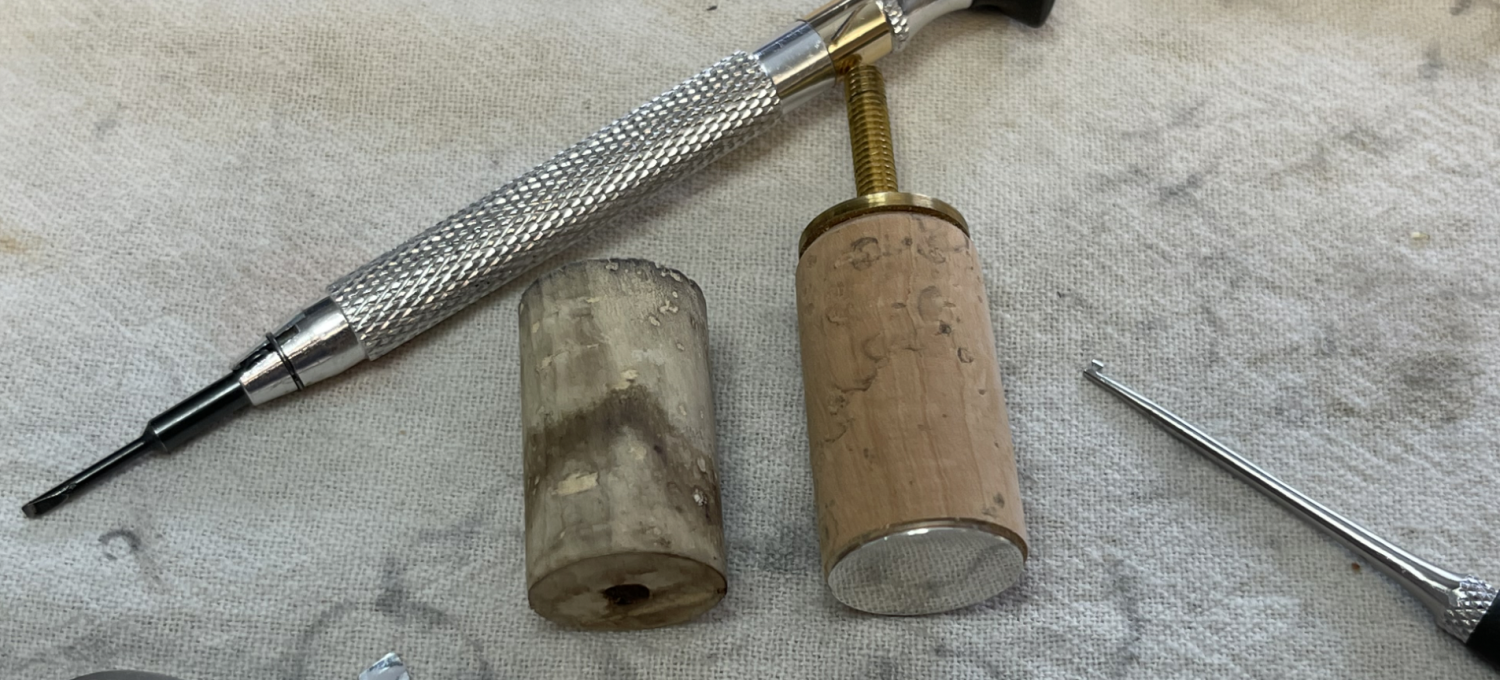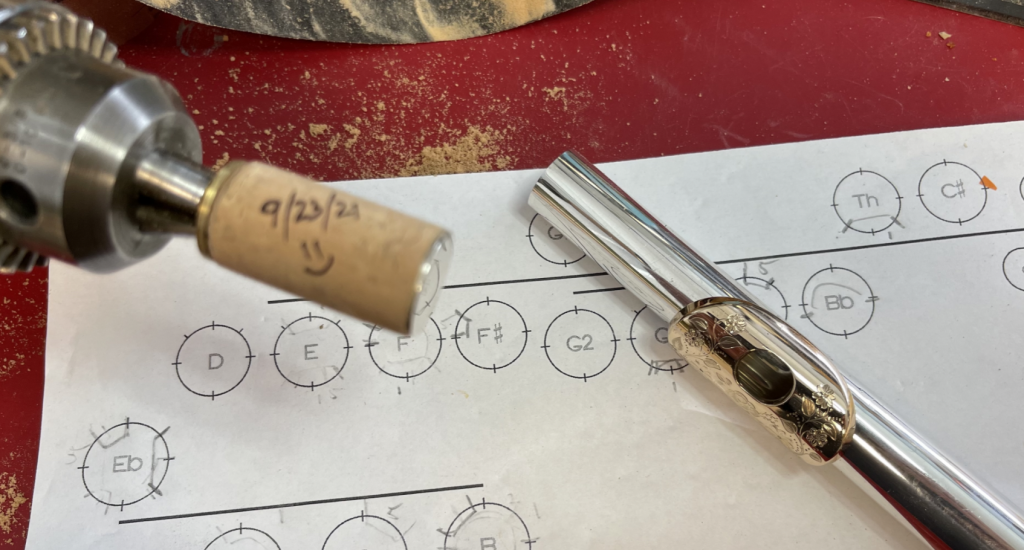Here we are, starting to see the leaves change again and digging for the sweatshirts in the back of the closet. I got to thinking about all of my wooden instruments and what I need to do to prepare for the weather change, and I decided to share those thoughts with our readers. When I asked a few friends what they would like to read about, they suggested discussing general maintenance and why it is important. So here it goes from my technician’s perspective! Before I was a technician, I was a player and the time and money involved in maintaining my instruments was always something I thought about as soon they started acting up. I have been shocked at the stories I’ve heard from other technicians and from players alike. I’ve had technicians tell me that people have argued that for as much as they’ve paid for their flute, why does it need work, it should be perfect? I have also had flutes come into the shop where the owner proudly professed never having had work done and it still plays perfectly after 30 years. Meanwhile, three pads don’t have any skins on them and two keys don’t move at all. So why should you have regular maintenance?
Think of instrument maintenance like maintaining your car. Ask yourself if you would ever go ten years without an oil change or tire rotation and still expect your car to run, let alone start? Well, as much as we think of our instruments as tools of our craft, they are in fact mechanical devices. All mechanical devices wear and break down over time and with a lot of use. Machinery requires lubrication to prevent or slow down the damage that friction from repetitive motion can cause. Also, materials, like felt, cork, and adhesives deteriorate over time. Felts, corks, and pads can compress or expand and may become hard and brittle or soft and pliable, depending on location and use. Oil does evaporate and also attracts dirt. Metal on metal with no lubrication and particles of dirt can cause mechanisms to bind or gauge rods and hinge tubes on the inside. These are all things technicians think about but players may not even notice because most of this happens slowly. Players may not realize they are compensating for a leak by squeezing a tad harder, which in turn may bend the key, causing a bigger leak on the flute and carpal tunnel for the player.
Players may notice intonation and response issues. Sudden chirping notes, or notes that don’t speak as easily as they used to. We often blame ourselves for being rusty, not practicing as much or just being out of shape. As felts compress, key heights widen and cause notes to go sharp. Corks compress and get hard and brittle, making the flute sound noisy. Under all those adjustment tabs are paper or plastic shims that wear thin or even fall out, causing minor adjustment issues which can result in a fuzzy tone or a flute to lack clarity of tone. Then there is the headjoint cork—when that deteriorates too far, the flute just doesn’t seem to resonate like it once did when we fell in love with it.
I just overhauled my own flute (something to be done about every 10 years or so and my flute just turned 12). This was basically a reset back to factory settings with all new pads, corks, felts, and keys fit to appropriate tolerances again. I was amazed at how easy my upper register responded and was to control. The key venting had opened too far because over the ten years that I owned the flute, the felts compressed. This compression happens so slowly that a COA doesn’t address the .005 millimeter change from year to year. Over 10 years, those little changes add up.
Piccolos benefit even more from regular service. Wood piccolos change with the weather and require special attention to prevent cracking. So, a wood body that changes with the weather and felts and corks that shift with the weather combined with the much smaller margin for error can be a nightmare for the player and a lot of extra work for the technician. Piccolo players face tuning and response issues regularly, so why make these things even more challenging? On top of all of that, wooden instruments like piccolos do wear out or “blow out.” This is when the wood just gives out and the bore dimensions change beyond functional parameters. Your technician can help keep an eye out for these drastic changes and with regular maintenance, can help your flute and piccolo last a long time. Good technicians aren’t cheap because they are highly trained and specialized. I have seen players try to save a few dollars by going to a general instrument repair shop where the technician wasn’t used to working on gold flutes or dealing with the craftsmanship of handmade instruments. I have also seen gold headjoints that were unrepairable, literally destroyed because the shop lacked the knowledge or the proper tools to work with high end instruments. I have also seen keys get broken, bent, and marred because methods appropriate for student instruments were applied to instruments of artist quality. Would you take a Ferrari or Tesla to a local garage and expect them to carry the parts or have the right tools for these expensive vehicles?
Regular maintenance isn’t cheap but it keeps your instrument in top shape. It will help your investment hold its value and can save your butt when you have an audition or an important gig that could change your life. You don’t go to a Podiatrist to have brain surgery, you go to a brain surgeon. Treat your flute service like your car service, plan ahead, budget, and do the preventative maintenance to keep your instruments in top shape.


